Search
Using the filters to the left, click your selection, it will become bold and filter the results, click it again to remove that filter.
No Sherman Tank could stand up to a Panther Tank, but the U.S. had advantages of supporting airpower, plentiful reserves, and an overwhelming superiority of numbers. During the Normandy Campaign in the Second World War, German Panther and Tiger tanks proved to be technically superior to Allied M4 Sherman Tanks. The heavily armoured German tanks outgunned their opponents with higher velocity tank guns, resulting in huge losses of Allied tanks. Consequently, Shermans became known as Purple Heart …
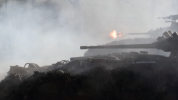
‘The history of failure in warfare can be summed up in two words: Too late.’ – General Douglas MacArthur In Part 1 of Making a Case for Space published in early 2017, I submitted a case for sovereign space launch and small satellite capabilities. In my estimation, a bespoke space capability was cost-feasible due to technology advancements, which would become increasingly vital to national security in the years ahead. So now in 2019 where military space is firmly de rigueur , it’s timely to revisit the …

Greg Rowlands, a retired Lieutenant Colonel, served over 27 years in the Australian Regular Army, including service in mechanised and light infantry units. As a combat tactics instructor, he was selected as ‘Instructor of the Quarter’ at the US Army Infantry School during an exchange posting. A military futurist and former capability development practitioner, he has published extensively on drone defence concepts and military space operations, including emerging technology trends relevant to Defence. … …
The current manner in which the Australian Army formally develops its junior officers is heavily focused on generalised outcomes and rarely fosters an environment where subalterns are compelled to use their cognitive and analytical skills. This article will argue that the Australian Army should re-think its approach to the formal training and education of its junior officers and suggests a framework in which this change may be implemented. For the purpose of this article, training is defined as the …
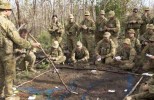
‘But a nation that does not exploit new and emerging technologies, that does not continuously modernise and which does not seek novel opportunities for advantage over potential adversaries will be found wanting when its military is needed.’ [1] In response to COL Smith and Dr Palazzo’s article, Coming to Terms with the Modern Way of War , it is exciting to see that the adoption of advanced technology, such as precision missiles, is being considered as an integral component of force design and development …

Throughout the past two decades the words religious extremism and terrorism have become synonymous with each other as many Islamic nations resist the global pull of western secular society. Recently, however, the attacks in Europe show a different side of terrorism and radicalisation that has little to do with religious affiliation. In the last 18 months an increasing number of studies have been conducted into the growth of foreign fighters and the origins of radicalisation amongst European youths behind …
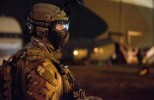
This article will seek to argue that historical concepts of mounted forces have framed our contemporary understanding of mounted capability in a way that has left a gap in our language and thoughts. It will further argue that the resulting gap has created a situation where our organisation is unable to reach a common understanding about mounted capability that fits neatly within historical examples. Finally it will argue for a framework to rectify these problems. All of our concepts of mounted capability …
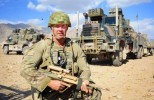
Whether it realises it or not, the modern world relies on space-based technology for a range of vital applications, not limited to science, communications and navigation. Our major allies, following considerable investment in military space systems, are Australia’s indispensable enablers for coordination, targeting, intelligence and weather monitoring. Unfortunately, open sources indicate that other space-capable nations may have developed counter-measures to these space capabilities in every orbit …
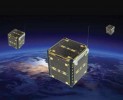
The year is 2022, and regional actors have initiated hostilities near a familiar peninsula, several thousand nautical miles north of Australia. Anticipating large-scale combat operations, Australia’s allies have dispatched Carrier Battle Groups (CVBG), while Australia has committed an Amphibious Task Group (ATG). The ATG will secure an island located along the allies’ eastern flank, permitting allied forces to mass effects against the decisive operation. The ATG objective possesses strategic significance, …

Army finds itself at the dawn of the Fourth Industrial Revolution (4IR) where rapid technological advancements seem to be revealed on a regular basis. 4IR is comprised of new technologies, including but not limited to, machine intelligence, [1] robotics and autonomous systems. However a central feature of 4IR is emergence of the Internet of Things (IoT), which is essentially a global network of objects connected via the internet. Initially intended to link everyday household items [2] to the internet …

